Figure (Five straight line numbered 1, 2, 3, 4 and 5) shows graph of change in temperature ΔT verusus heat supplied ΔQ for different process performed on a gas of one mole.
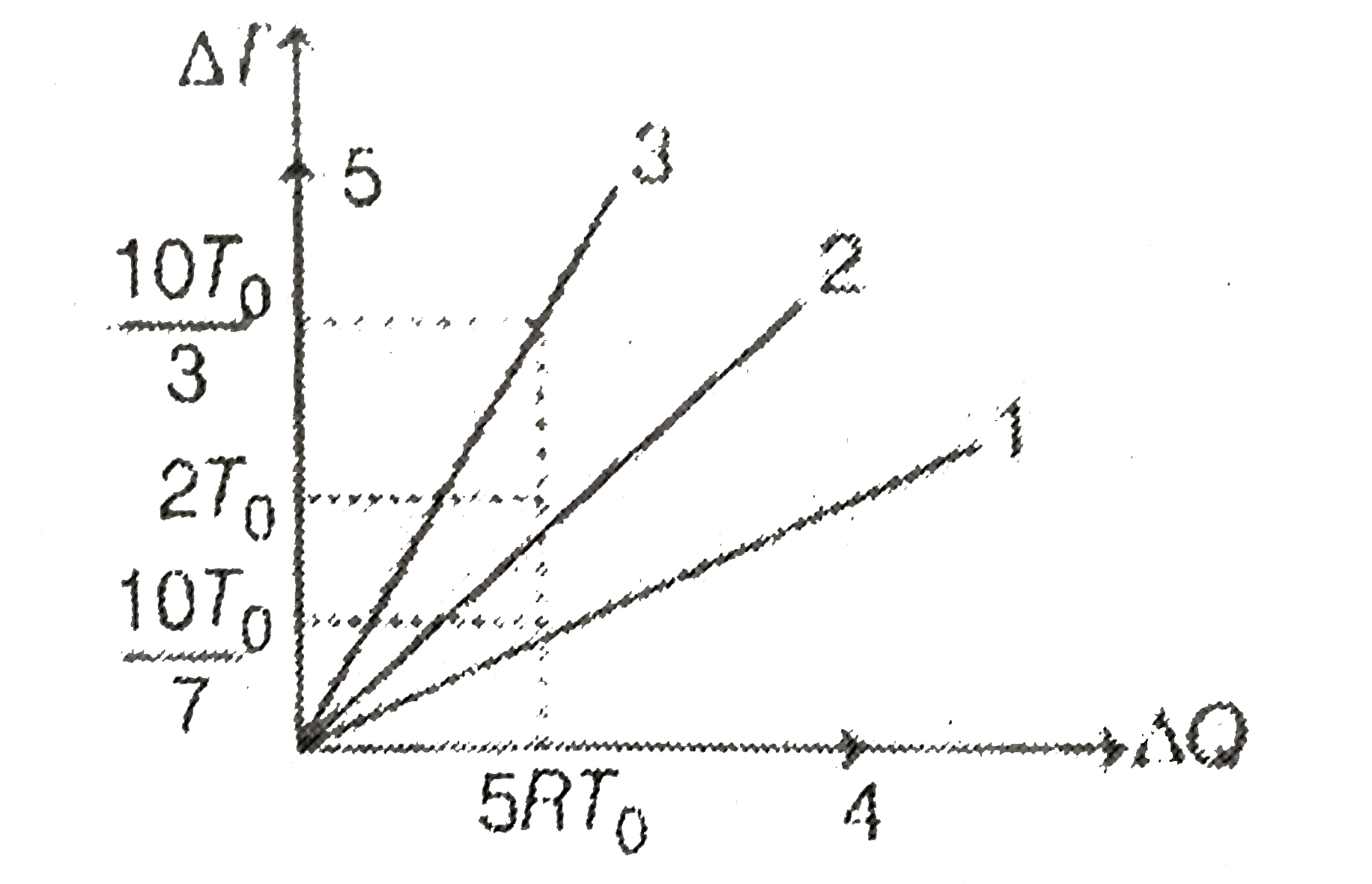
lines 4 and 5 (coinciding with ΔQ and ΔT axis respectively) represent isothermal and adiabatic processes respectively
line 2 respesents isochoric process for diatomic gas
lines 1 and 3 represent isochoric process for a diatomic gas and isochoric process for a monoatomic gas respectively
line 2 represents isobaric process for a monoatomic gas.
The correct Answer is:A, B, C, D
Step by step video, text & image solution for Figure (Five straight line numbered 1, 2, 3, 4 and 5) shows graph of change in temperature Delta T verusus heat supplied Delta Q for different process performed on a gas of one mole. by Physics experts to help you in doubts & scoring excellent marks in Class 11 exams.
Updated on:21/07/2023Topper's Solved these Questions
Similar Questions
The straight lines in the figure depict the variations in temperature ΔT as a function of the amount of heat supplied Q is different process involving the change of state of a monoatomic and a diatomic ideal gas . The initial states, (P,V,T) of the two gases are the same . Match the processes as described, with the straight lines in the graph as numbered.
_E01_155_Q01.png)
Column-IColumn-II(A)Isobaric process of monoatomic gas.(p)1(B)Isobaric process of diatomic gas(q)2(C)Isochoric process of monoatomic gas(r)Minimum at section B(D)Isochoric process of diatomic gas(s)x-axis (i.e.'Q' axis)
View SolutionOne mole of an ideal gas is heated at constant pressure so that its temperature rises by ΔT= 72 K. In The heat supplied is Q=1.6 kJ, find the change in its internal energy and the work done by the gas.
View Solution
Knowledge Check
The graph shown below is a graph between work done on the gas versus heat supplied to it. Different lines OA, OB, OC, OD represent different processes on monoatomic gas or a diatomic gas. Match the correct process with the line.

List IList IIP. OA1. Adiabatic ProcessQ. OB2. Isobaric process for monoatomic gasR. OC3. Isothermal processS. OD4.Isobaric process for diatomic gasAP-4,Q-2,R-s,S-1BP-3,Q-4,R-1,S-2CP-4,Q-3,R-2,S-1DP-2,Q-1,R-4,S-3For an ideal gas four processes are marked as 1,2,3 and 4 on P-V diagram as shown in figure. The amount of heat supplied to the gas in the process 1,2,3 and 4 are Q1,Q2,Q3 and Q4 respectively, then correct order of heat supplied to the gas is : [AB is process-1, AC is process-2, AD is adiabatic process-3 and AE is process-4]
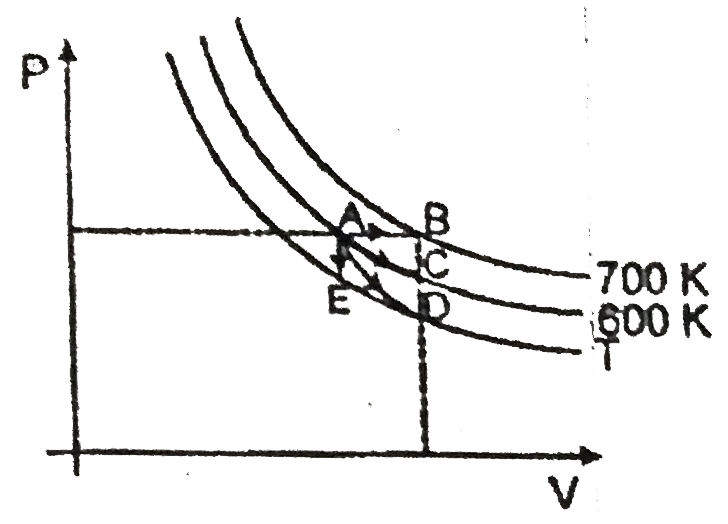 AQ1>Q2>Q3>Q4BQ1<Q2<Q3<Q4CQ1>Q2>Q4>Q3DQ1>Q4>Q2>Q3
AQ1>Q2>Q3>Q4BQ1<Q2<Q3<Q4CQ1>Q2>Q4>Q3DQ1>Q4>Q2>Q3Consider one mole of an ideal gas whose volume changes with temeperature as V=αT, where α is a constant. Heat is supplied to the gas to raise its temperature by ΔT. If γ adiabatic constant then choose the correct options.
AThe work done in the process is RΔTBThe work done in the process is −RΔTCChange in internal energy of gas is RΔTγ−1DChange in internal energy of gas is −RΔTγ−1
A reversible heat engine carries 1 mole of an ideal monatomic gas aroung the cycle 1-2-3-1. Process 1-2 takes place at constant volume, process 2-3 take place at constant volume, process 2-3 is adiabatic, and process 3-1 takes place at constant pressure. Complete the values for the heat ΔQ, the change in internal energy ΔU, and the work done Δ, for each of the three processes and for the cycle as a whole.

View SolutionAn ideal gas undergoes the process 1→2 as shown in the figure, the heat supplied and work done in the process is ΔQandΔW respectively. The ratio ΔQ:ΔW is
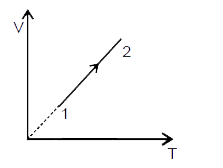
View SolutionThree moles of an diatomic gas are in a closed rigid container at temperature T (in K). 1 mole of diatomic gas gets dissociated into atoms without appreciable change in temperature. Now heat is supplied to the gas and temperature becomes 2T. If the heat supplied to the gas is x(RT), find the value of x.
View SolutionFor an ideal gas four processes are marked as 1,2,3 and 4 on P-V diagram as shown in figure. The amount of heat supplied to the gas in the process 1,2,3 and 4 are Q1,Q2,Q3 and Q4 respectively, then correct order of heat supplied to the gas is:
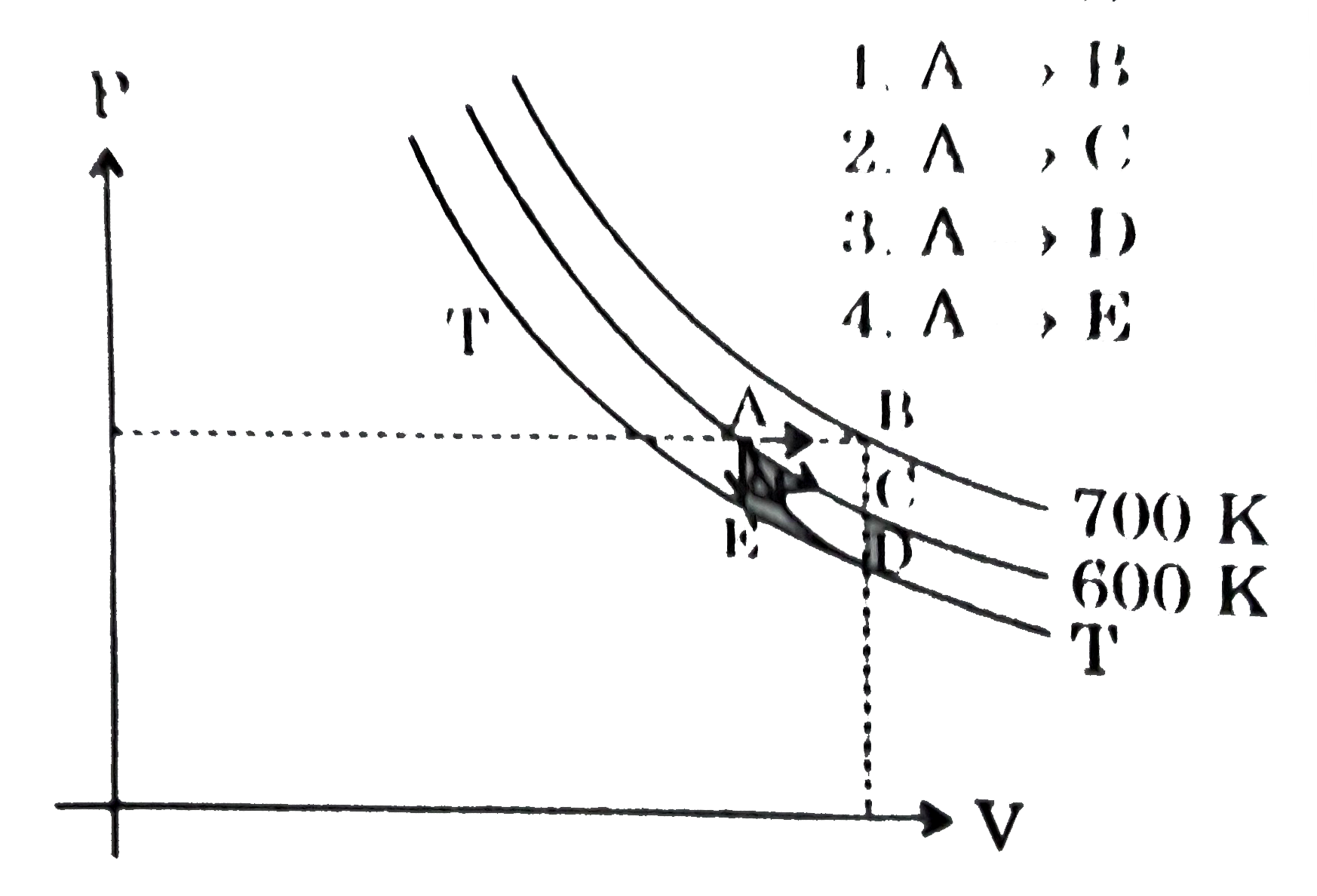
View SolutionA gas undergoes A to B through three different processes 1,2 and 3 as shown in the figure. The heat supplied to the gas is Q1, Q2 and Q3 respectively, then
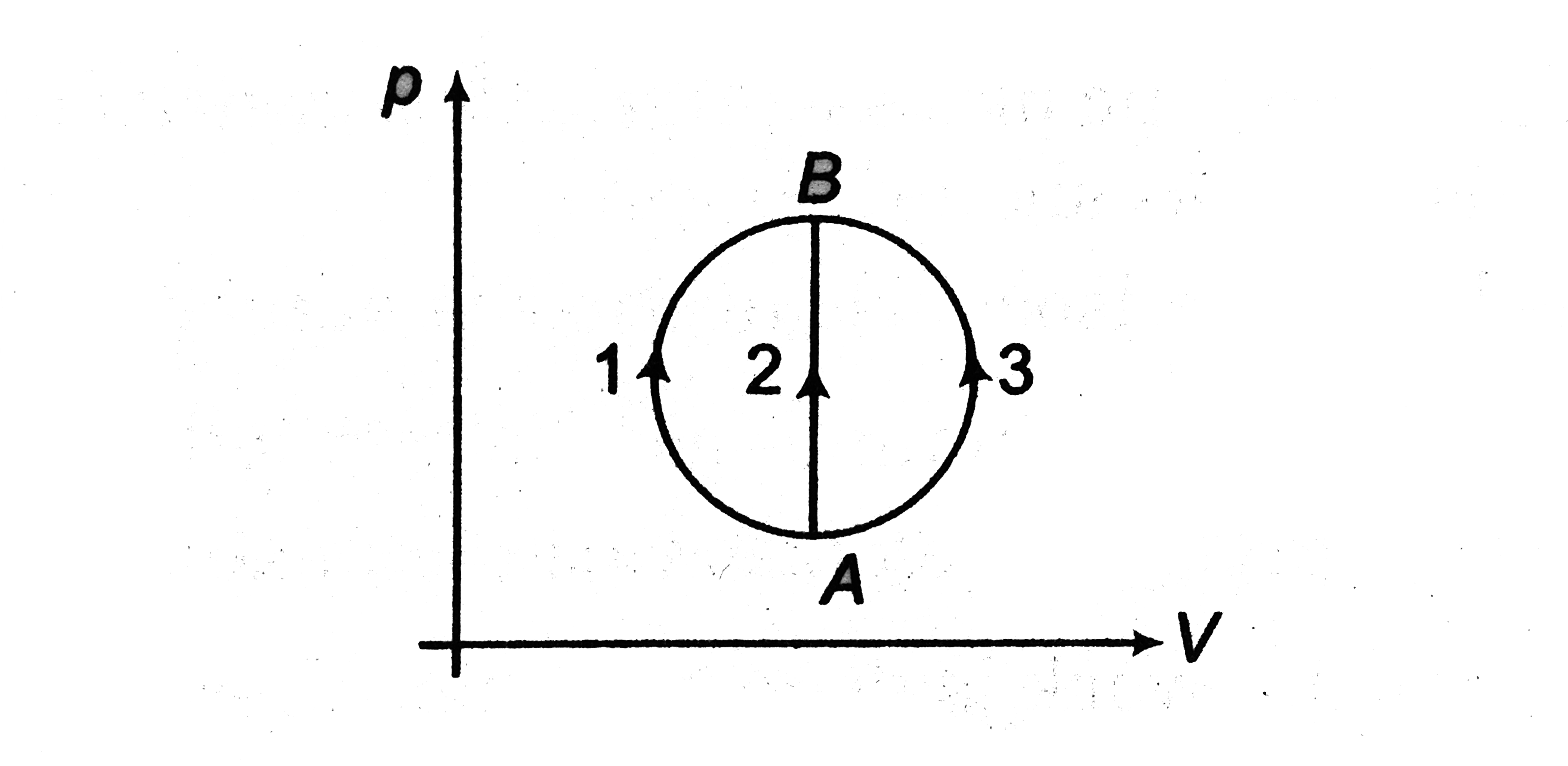
View Solution
